Panelist for Hometown Summit
As GHC executive director, I attended the Hometown Summit which is connected to the TomTom Festival in CHARLOTTESVILLE, VA earlier this month. It was a conference about discovering how small and mid-sized cities are test beds for path-breaking solutions to 21st century challenges. It was a convening and celebration of leaders in small and mid-sized cities who have spearheaded some of the nation’s most creative and successful initiatives for community problem-solving. Featuring dozens of keynotes, workshops, and peer-led panels, it was an excellent opportunity to learn from and connect with outstanding change-makers in this dynamic segment of American communities.
I was invited to speak on the Creative Placemaking Panel facilitated by Jason Schupbach, Director of Design and Creative Placemaking at the National Endowment for the Arts. Jason Schupbach is the Director of Design Programs for the National Endowment for the Arts, where he oversees all design and creative placemaking grants and partnerships, including Our Town and Design Art Works grants, the Mayor’s Institute on City Design, the Citizens’ Institute on Rural Design, and the NEA’s Federal agency collaborations. Previous to his current position, Jason served Governor Patrick of Massachusetts as the Creative Economy Director, tasked with growing creative and tech businesses in the state. He formerly was the Director of ArtistLink, a Ford Foundation funded initiative to stabilize and revitalize communities through the creation of affordable space and innovative environments for creatives. He has also worked for the Mayor of Chicago and New York City’s Department of Cultural Affairs. He has written extensively on the role of arts and design in making better communities, and his writing has been featured as a Best Idea of the Day by the Aspen Institute.
Other panelists included Juanita Hardy, a Senior Visiting Fellow with Urban Land Institute and Liz Ogbu, Founder & Principal, Studio O along with Yours truly— Teal Thibaud.
The panel was about how many communities have begun to engage in a process known as “creative placemaking,” whereby artists, arts organizations, and community development practitioners intentionally integrate arts and culture into community revitalization work–placing arts at the table with land-use, transportation, economic development, education, housing, infrastructure, and public safety strategies. Presenters on this panel shared case studies and techniques from the National Endowment for the Arts’ (NEA) “Our Town” grant program and the Urban Land Institute’s creative placemaking portfolio, and local practitioners talked about how to do such work effectively. The session’s goal was illuminate a variety of approaches that seed innovation via creative placemaking and help foster better places across America.
It was an excellent experience and an engaging session. I was honored to be involved and thankful for the raw and honest conversation. Before and after the panel, I attended a few peer-led panels and workshops that included Dan Pitera, director of DCDC (Detroit Collaborative Design Center). I learned so much from him and would like to take the time to share a few of my takeaways with you all:
1) Engagement vs. Participation:
In previous communications, Glass House Collective has worked hard to “engage” our community in our day to day work. We realized at the Hometown Summit that there’s a difference between engagement and participation.
“engage in” – to spend time doing
“participate” – to be a part of something, to take part in something.
After realizing this, we feel comfortable sharing that Glass House Collective engages stakeholders (non profits, community associations, etc) in our work and enlists community participation in our design process, activation events, etc.
Dan explained several tools and mindsets needed for change:
-
Intensive Community Participation
-
Content for design vs. validating (post-rationalizing) the design – tools of the discipline and community engagement
-
Cities should be concerned about the whole built environment and not just about building buildings.
2) Think of a cultural community like a Mosaic:
This metaphor Dan uses to explain the quality of urban fabric they hope to achieve speaks to our past, present, and ambitions in [hopefully] all cities: remembering the rich and diverse history of the cultures of our heritage, understanding new citizens are still arriving and adjusting to their place in the city, and moving forward in a way that celebrates differences in a cohesive manner.
3) Reversing the Design “Problem”:
While discussing the client interactions as a professional architect and client expectations, Dan works to widen the dialog. For example, when you need to design stairs, what do you think of? A stair tread rising a story up or instead thinking of task a the design problem being about ascending/descending. If that latter, It opens the vocabulary and understanding from a pre-conceived noun to a dynamic verb set, thus opening the box to outside, creative possibilities and solutions.
4) Streetscape versus Public Realm
A Streetscape is made of things, but a Public Realm is made of people. GHC needs to stop using terms like “streetscape” because the neighborhood and stakeholders consider that process outcome driven by objects. Objects CAN be an outcome, but enlisting participation in the design process for the public realm at Dodson Ave and Glass Street can create more meaningful opportunities among neighbors.
In reflection, the conversations at the conference continue to inspire us to keep learning and growing. I want our work at GHC to be as transparent as possible, to be accountable to our community and organizational leadership, and to find methods for genuine participation by residents while remaining respectful and open. We can’t rely on traditional methods of trying to recruit people into a building. Instead we will explore how to make it easier to participate: interrupting people’s lives as little as possible by going directly to them.

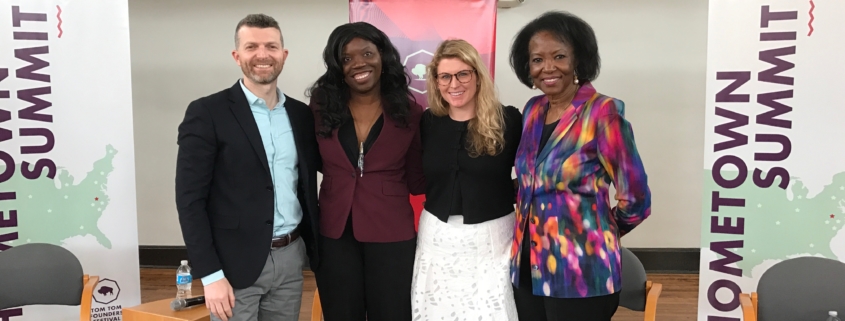

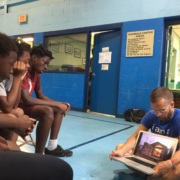
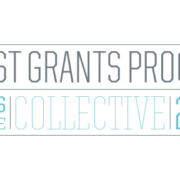
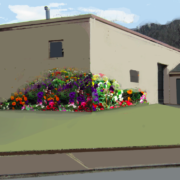
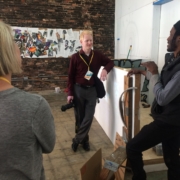
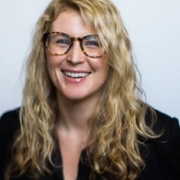
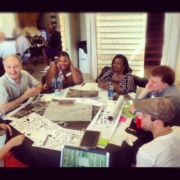



Leave a Reply
Want to join the discussion?Feel free to contribute!